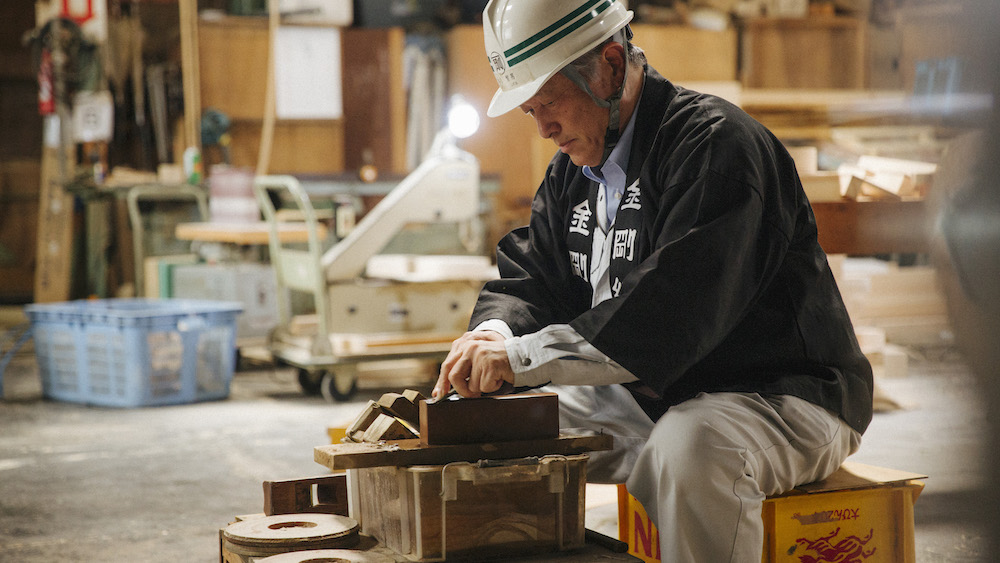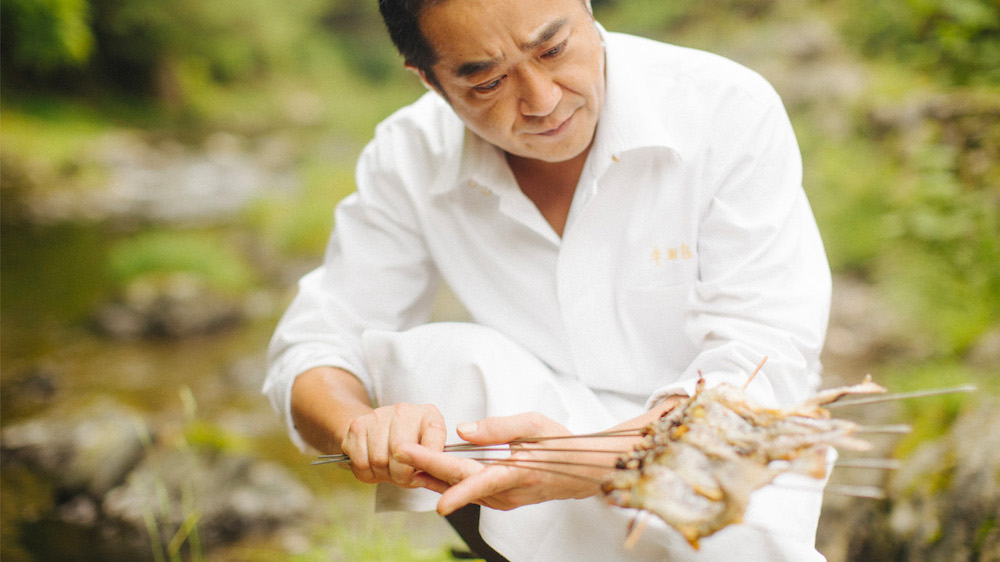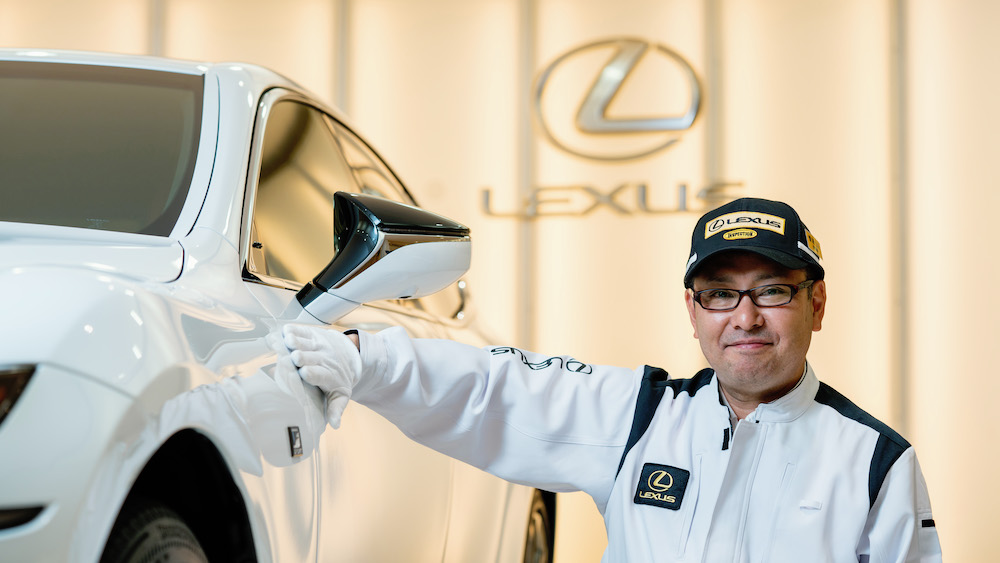Premiere Screening Of Lexus Film “Takumi - A 60,000-Hour Story On The Survival Of Human Craft”
Last night IX Magazine attended the official launch of the new Lexus sponsored film “Takumi - A 60,000-hour story on the survival of human craft” at Japan House in Kensington for a special screening with the director, writer and Kirie artist Nahoko Kojima.
Lexus has produced a new documentary that poses the question of whether the skills of devoted craftsmen and women can survive in a world increasingly powered by Artificial Intelligence.
Takumi - A 60,000-hour story on the survival of human craft, explores the world of the takumi, the highest level of artisan in Japan. These highly skilled people also play a key role in delivering the luxury quality present in every Lexus vehicle.
In the West, it’s often considered that it takes 10,000 hours of study for the average person to become an expert in their subject. But in Japan you are not considered a master of your craft until you have spent 60,000 hours refining your skills. That’s the equivalent of working eight hours a day, 250 days a year, for 30 years.
The film is a character-driven study made by Clay Jeter, director of Chef’s Table – the first Netflix original documentary. Set for global release through the Amazon Prime Video via the Prime Video Direct self-publishing service on 19 March, it follows four Japanese artisans who are dedicating their lives to their crafts, including a double Michelin-starred chef, a traditional paper cutting artist, an automotive master craftsman and a carpenter working for one of the world’s oldest construction firms.
The documentary had its premiere at the DOC NYC film festival in New York and is unique in that the medium is also the message. As well as a feature-length version there will be a ’60,000’ hour cut which loops scenes of the essential skills of each takumi as they are repeated time and again, to highlight the hours, days and years of practice involved.
The video is narrated by Neil MacGregor, former Director of the British Museum, and includes interviews with world experts in crafts and AI. It asks how human craft can be honoured and preserved at the same time as machines are being designed to work faster and with greater precision than people ever could.
Nora Atkinson, Curator of Craft at the Smithsonian American Art Museum, makes the point that in an age where people commonly feel they don’t have enough time, fewer artists will be able to invest the thousands of hours it takes to become a skilled craftsman.
By 2050, it is estimated that machines will be capable of surpassing human performance in virtually every field. Martin Ford, author of Rise of The Robots: Technology and The Threat of a Jobless Future, said: “We’re in the midst of exponential progress. In the next 10 years we’re going to see 10,000 years of progress.”
Will human craft disappear as artificial intelligence reaches beyond our limits? Or will this cornerstone of our culture survive and become more valuable than ever? This documentary looks at how to take the long road to excellence in a world that’s constantly striving for shortcuts.
“The essence of takumi is to gain a sublime understanding of the nuances of a particular art,” said Nahoko Kojima, the paper cutting artist featured in the documentary. “To be focused and spend countless hours on one thing, and to carry on requires one to empty the mind and focus in a way that simply isn’t possible when still acquiring a skill.”
Spiros Fotinos, Head of Global Brand at Lexus International, added: “The concept of takumi has been physically and philosophically at the core of the Lexus brand since it was launched 30 years ago. Our takumi masters have more than 6.0000 hours (30-plus working years) of experience developing their craft. To celebrate the brand’s anniversary year, we want to capture the essence of the takumi – and their 60,000-hour journey – on film.”
The 54-minute feature and the 60,000 hour cut can be viewed at www.takumi-craft.com. The documentary, created by The&Partnership London, will be available on Amazon Prime Video, Amazon Instant, Google Play and iTunes.
The first subject of the documentary, carpenter Shigeo Kiuchi, 67, was trained by his father in the art of Miyadaiku – an ancient Japanese form of carpentry. “I see myself as like a custodian,” explains Kiuchi. “I learned from my father who worked here before me, and now I’m passing on the skills to future generations.”
Kiuchi works at Kongō Gumi in Osaka, a temple-making company founded in 578 AD that he joined as a teenage apprentice. Kiuchi plans to continue his career indefinitely: “Carpenters don’t retire,” he says. However, he describes his life-long contribution to the company as being “like a blink of an eye” in comparison to its history.
Kongō Gumi is the world’s oldest existing company, founded when Prince Shotoku commissioned Japan’s first Buddhist temple. It’s been in the hands of the same family ever since, and today a 41st generation family member sits on its board.
Hisato Nakahigashi runs Miyamasou, a two-Michelin star restaurant in Kyoto. He is a fourth generation kaiseki chef whose great-grandfather founded Miyamasou, an inn for pilgrims to stay when visiting the 12th century temple with which the restaurant shares its grounds. “For Hisato, his turning point came when he was 20,000 hours into his takumi journey,” says the documentary’s director Clay Jeter. “His father died unexpectedly at the age of 55, and Hisato had been finessing his craft working in fine dining restaurants overseas. However he made the decision to come home and continue the legacy and he’s really elevated the restaurant to something extraordinary.”
Every morning, to source his ingredients for his honoured guests, Hisato fishes in the local river and forages for herbs and mountain vegetables. He says he “gives thanks” to nature for supplying his food. This dedication is all part of kaiseki - a traditional Japanese multi-course dinner with a time-honoured tradition of going above and beyond for your guests.
Artist Nahoko Kojima is 37, but has already dedicated 60,000 hours to her craft. She began kirie (Japanese paper cutting) under private tutelage when she was only five years old. When she turned 18 she moved to Tokyo, and in 2004 she graduated with a degree in Design from Kuwasawa Institute. She briefly pursued a career in Graphic Design in Tokyo, but ultimately moved to London to study arts further, and within a few years exhibited her first solo paper cut show. In 2012, her piece The Cloud Leopard was presented in London’s Saatchi Gallery. This was made from just a single sheet of black paper and took around five months to complete. Kojima’s process begins with careful sketches and tests using smaller pieces of paper. Her practice is labour-intensive in the extreme, and demands tremendous concentration; if she makes a mistake there is no way to repair it. She uses scalpel blades that are half the thickness of normal blades and are replaced every three minutes.
In 2013, she won the Jerwood Makers Open Award, for which she created Byaku, a swimming polar bear. In 2018 she faced her biggest challenge, creating a 32-metre life-sized sculpture of a blue whale, Shiro. The cutting of this sculpture is shown in the film. Primarily London-based, Kojima accepted a coveted Kuwasawa Award in Tokyo in 2016 for her contribution to the arts.
Katsuaki Suganuma has worked at Lexus for 32 years and is a takumi in charge of the final inspection. He has seen big changes in terms of technology, with the introduction of artificial intelligence and robots. But he’s also proof that humans still play a vital role in car manufacturing. The documentary takes us behind the scenes at the four-million square metre Tahara plant in Aichi, Japan, which is regarded as one of the world’s most high-tech factories.
Katsuaki is one of a handful of extraordinarily dedicated individuals with the quarter of a century of practice required to become a Takumi Master Craftsman. This time is spent practising and refining with minute precision. The result is a group of craftsmen with razor-sharp senses who are regarded – and regard themselves – as the guardians of Lexus craft at every stage of production.
This approach to craftsmanship is a philosophy that runs throughout the business, in which the takumi are responsible for passing their skills on to new generations.
Nora Atkinson is a prominent American expert on craft, with a specific focus on the role and importance of handmade in modern culture. Her current role is a Curator of Craft at the Smithsonian American Art Museum in Washington DC. She was recently named Washingtonian Magazine’s 2018 Best Boundary-Pushing Curator for her work on a number of critically acclaimed shows.
Earlier this year Atkinson spoke at a TED event called The Age of Amazement - a future-focused event exploring AI and new forms of creativity and social change. We have filmed Atkinson in Washington. Her commentary was about craft in general and its role in the digital age. Importantly for us, she linked craft to luxury in terms of real handmade objects and their value in the future.
Martin Ford is a futurist and author focusing on the impact of artificial intelligence and robotics on society and the economy. He will act as an opposing point of view on AI progression and provide us with a contrasting narrative to our other experts. He has written two books on technology. His most recent book, Rise of the Robots: Technology and the Threat of a Jobless Future (2015), was a New York Times bestseller and won the Financial Times and McKinsey Business Book of the Year Award in 2015.
Martin’s TED Talk on How AI could cause job loss discusses the dichotomy between the negative effect on industries that AI could have, versus the undeniable progress it can cause and the new industries it could inspire. He has a loyal following on Twitter, with 42.3k followers and had actively engaged in the discussion on Japan and Technology, tweeting about ‘why westerners fear robots and the Japanese do not’.
Jon Bruner is a journalist and programmer who runs the Digital Factory program at Formlabs, a company that builds professional-grade 3D printers. Before joining Formlabs, he oversaw publications on data, artificial intelligence, hardware, the Internet of Things, manufacturing, and electronics, and was program chair, along with Joi Ito, focused on the intersection between software and the physical world. He is a prolific contributor online with articles such as Making AI Transparent and Integrating Data with AI where he talks about the relationship between ‘human experts’ and algorithms. Jon has been interviewed by The Economist’s own Podcast on the subject of the ability of machine to mimic man. He asks ‘if computers can create beautiful music, can 3D printers adopt traditional techniques to give us reinforced floors?’ In fascinating contrast to Martina Ford, Jon Bruner is an optimist. He’s the kind of futurist who is excited about the opportunities that are opened to humans when AI replaces certain tasks and jobs. He speaks to the beauty of the man working side-by-side with a machine.
See the film here: www.takumi-craft.com















